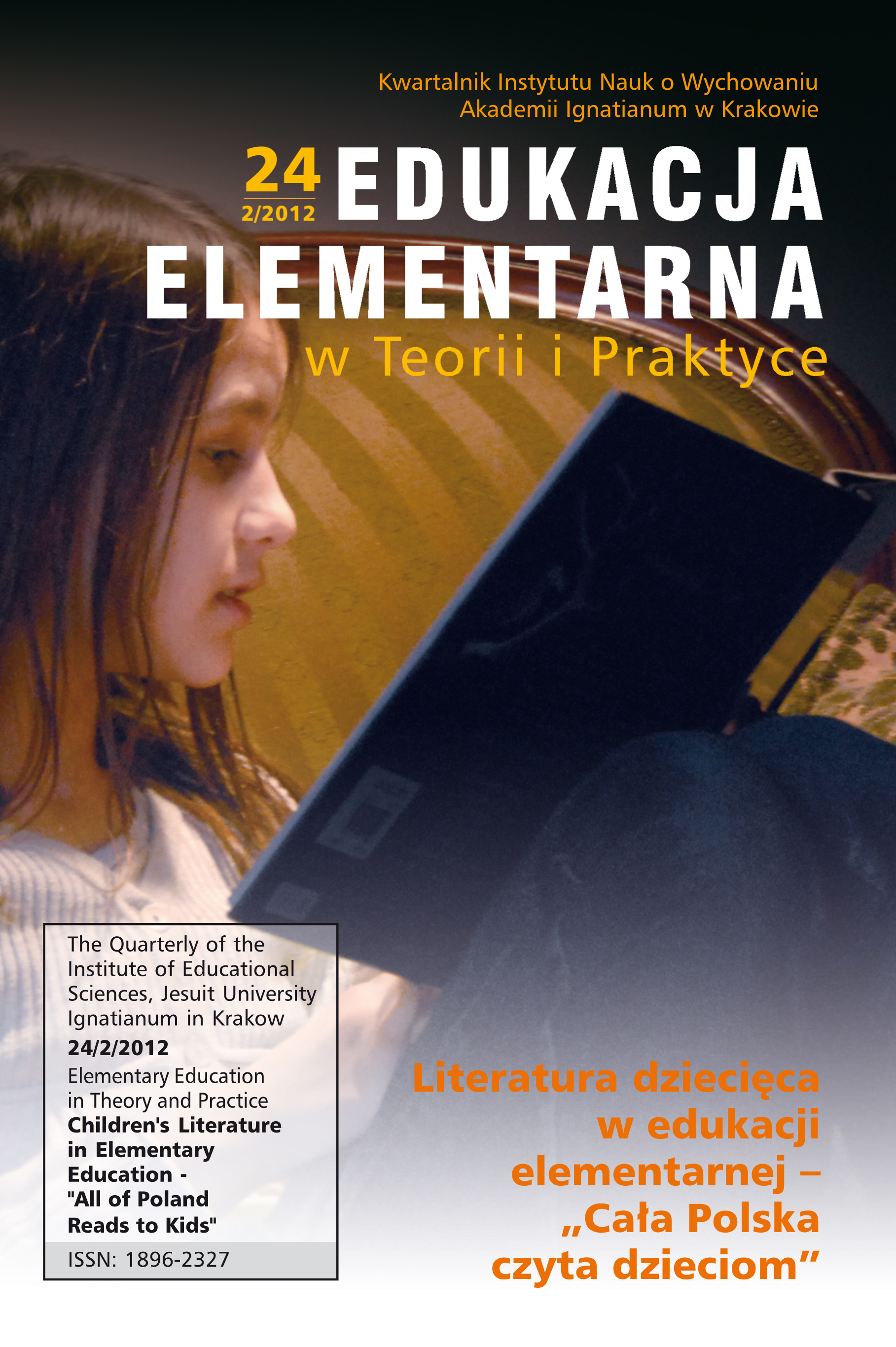The positive didacticism in the literary Works of Teofil Stanisław Nowosielski
Abstract
The aim of this article is to show the literary values of Stanisław Teofil Nowosielski's writing, relating only occasionally to the works addressed to children. A lot of attention is devoted to his didacticism. The first part of the article deals with Nowosielski's life and his most important works. The second part lists predominant thematic-formal features and characterizes each of them. In the summary, the author emphasizes the necessity of using Nowosielski's works by teachers, form teachers, carers, on well as parents.References
Kaniowska-Lewańska I., Literatura dla dzieci i młodzieży do roku 1864, WSiP, Warszawa 1973.
Kaniowska-Lewańska I., Stanisław Jachowicz. Życie, twórczość i działalność, WSiP, Warszawa 1986.
Kuliczkowska K., Literatura dla dzieci i młodzieży w latach 1864-1914, WSiP, Warszawa 1965.
Sławiński J. (red.), Słownik terminów literackich, Wyd. Ossolineum, Wrocław 1998.
Starożyk J.I., Śp. Teofil Nowosielski, „Kłosy”, (1889)1228.
Nowosielski T.S., Bajki i powiastki oryginalne i naśladowane Teofila Nowosielskiego, Nakładem Gustawa Sennewalda Księgarza przy ulicy Miodowej nr 486, Warszawa 1842.
Nowosielski T.S., Gwiazdka dla dobrych dzieci, Warszawa 1840.
Nowosielski T.S., Krzyżyk dla dobrych dzieci, Warszawa 1841.
Nowosielski T.S., Świat dziecięcy. Wstęp, t. 1, Warszawa 1842.
Copyright (c) 2016 Elementary Education in Theory and Practice

This work is licensed under a Creative Commons Attribution-NoDerivatives 4.0 International License.
- When submitting a text, the author declares that he/she is the Author of the article (hereinafter referred to as the “Work”) and:
- he/she owns the exclusive and unlimited copyright to the Work,
- is entitled to dispose of the copyright to the Work.
Declares that it does not infringe any third party copyrights or legal rights.
Declares that there is no conflict of interest.
2. At the same time, the Author grants the Ignatianum University in Cracowa royalty-free, non-exclusive and territorially unlimited licence to use the Work in the following fields of exploitation:
- recording the Work in a hard copy, as well as on a digital or magnetic medium;
- reproduction of the Work using any technique, without limitation of the number of editions or copies;
- distribution of the Work and its copies on any medium, including marketing, sale, lending, and rental;
- introduction of the Work into a computer memory;
- disseminating the Work in information networks, including in the Internet;
- public performance, exhibition, display, reproduction, broadcasting and re-broadcasting, as well as making the Work available to the public in such a way that everyone can have access to it at a time and place of their own choosing;
- within the scope of dependent rights to the Work, including in particular the right to make necessary changes to the Work resulting from editorial and methodical development, as well as to translate the Work into foreign languages;
The licence is granted from the moment of the transfer of the Work to the Ignatianum University in Cracow. The Ignatianum University in Cracow is entitled to grant further sub-licences to the Work within the scope of the right granted. The licence is time-limited and it is granted for a period of 15 years, starting from the date of its granting.
Authors are permitted and encouraged to publish their text online (e.g. in their institution’s repository or on the institution’s website) before or during the submission process as this may lead to beneficial exchanges, as well as earlier and greater citation of the published text (See The Effect of Open Access). We recommend using any of the following portals of research associations:
- ResearchGate
- SSRN
- Academia.edu
- Selected Works
- Academic Search




